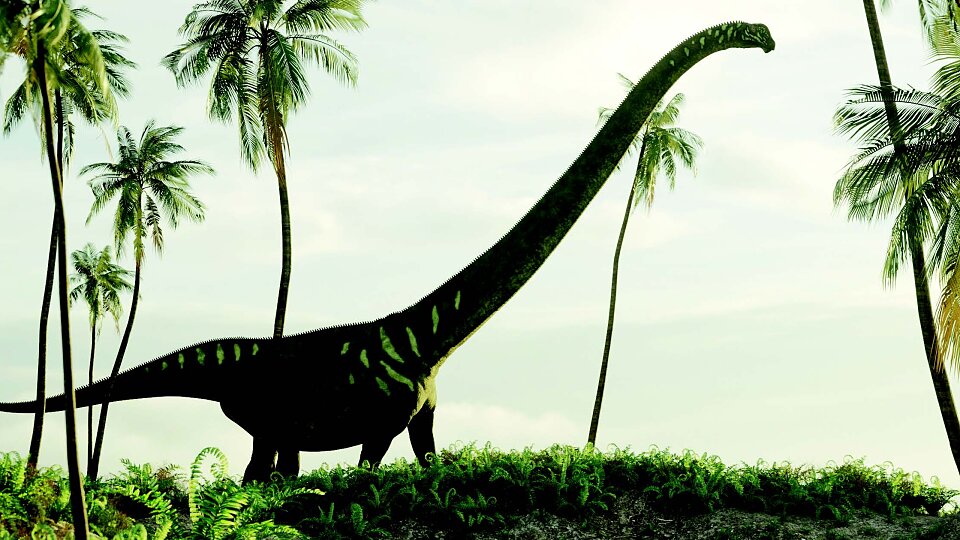Dinosaurs
In 1993, the world was shocked by a cultural phenomenon unlike they had ever seen before. Steven Spielberg’s film, Jurassic Park, shattered worldwide box office records, becoming the highest-grossing film worldwide to that point in film history.
And the franchise’s significance hasn’t decreased as time has gone on. In 2020, during the height of the COVID-19 pandemic, theaters decided to rerelease classic movies in theaters due to the shortage of new films. In late June of 2020, 23 years after the original release of Jurassic Park, the film again rose to No. 1 at the box office. Thus far, the Jurassic Park franchise has made over $5 billion in box office tickets alone.
There is no denying the fact that our world is captivated by dinosaurs. They fascinate our imaginations and inspire ongoing study of these historic creatures. Frankly, Jurassic Park was popular because it imagined something that most humans believe is completely impossible—dinosaurs and humans battling for survival at the same time.
What if I told you, they really did!
Evolutionary theory insists that the last dinosaur went extinct millions of years before the first human ever walked the earth, but I have an inside source that evolutionary scientists refuse to acknowledge. I know the eyewitness of creation, and He wrote His account in a book I trust completely—the Bible.
What does God have to say about dinosaurs and humans?
A literal, textual reading of Genesis 1-2 leads to an understanding that Adam and Eve—and the dinosaurs—were created on the sixth day of creation. But unlike the T-Rex in Jurassic Park, these dinosaurs were vegetarians.
Genesis 1 indicates that the land animals ate plants, not meat. Land animals would have included the long-necked brachiosaurus, who could reach the leaves at the top of the highest trees, to the T-Rex, who used his sharp teeth to cut into tough plants like melons or bamboo.
Scientists in India recently found fossilized dinosaur dung, and they were able to determine the source of food from that dung—various types of grass!
Remember, when sin entered the world due to Adam and Eve’s rebellion, God told them—and later Noah—that more than just plants were now available for food. That became true for both humans and animals. Carnivorous dinosaurs began to terrorize other animals and human beings!
Until the extinction of the dinosaur, man had to contend with the constant threat of these powerful, hungry creatures. Their extinction did not take place millions of years ago. In fact, a small-town in England recorded this event, just 600 years ago:
“There has lately appeared, to the great hurt of the countryside, a beast, vast in body, with a crested head, teeth like a saw, and a tail extending to an enormous length.”
Does that sound like some creature you’ve seen in your neighborhood? It sounds more like a description of something you’ve seen in your local natural history museum—in the dinosaur section.
There are many more examples of both first-person accounts and scientific discoveries that indicate humans and dinosaurs coexisted together. The bigger question is why? Why would God create these enormous and powerful beasts, knowing that they would terrorize humanity for thousands of years?
God answered that question best in his discourse with his faithful servant Job. Toward the end of Job’s suffering, God breaks His silence, and shocks Job with His majesty and power by taking Job on a tour of His creation (Job 38-41).
One of the stops on the tour allowed Job to view two large animals. God describes the leviathan, the largest sea animal, and the behemoth, the largest land animal.
While many scientists attempt to equate the description of behemoth with the hippopotamus or a rhinoceros, those animals don’t come close. God says to Job, “Behold now, his strength in his loins and his power in the muscles of his belly. He bends his tail like a cedar; the sinews of his thighs are knit together” (Job 40:16-17).
Would you compare the tail of a hippo to a cedar tree? No, this creature God describes most perfectly matches the description of the largest dinosaur discovered thus far—the sauropod.
God intended these massive creatures to teach Job, and us, two very important lessons.
First, these massive creatures remind us of our personal frailty.
Imagine how powerless Job would have felt in the presence of this creature. How scared and powerless would you feel if you came face to face with a sauropod, or especially a T-Rex?
The wonders of God’s creation remind us how dependent we are on Him. How can we even think about challenging the Creator who can create these monsters with just the words of His mouth?
Secondly, these massive creatures reveal to us God’s powerful creativity.
For Job, the behemoth is a living illustration that God has been, and always will be, in control of everything. Whatever God creates, He is certainly able to control.
Like Job, take comfort that the God who created and controls dinosaurs is the same God who created us and controls our lives as well. And as Job demonstrated, when we marvel at the creative power of the Lord, we are led to worship Him in awe. We’re also led to trust and revere our great God.



Add a Comment